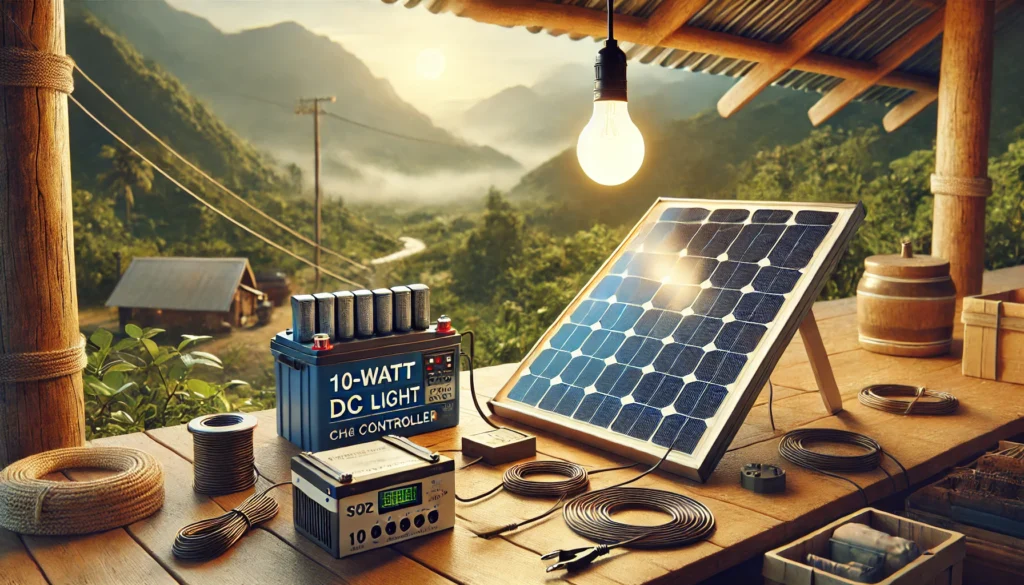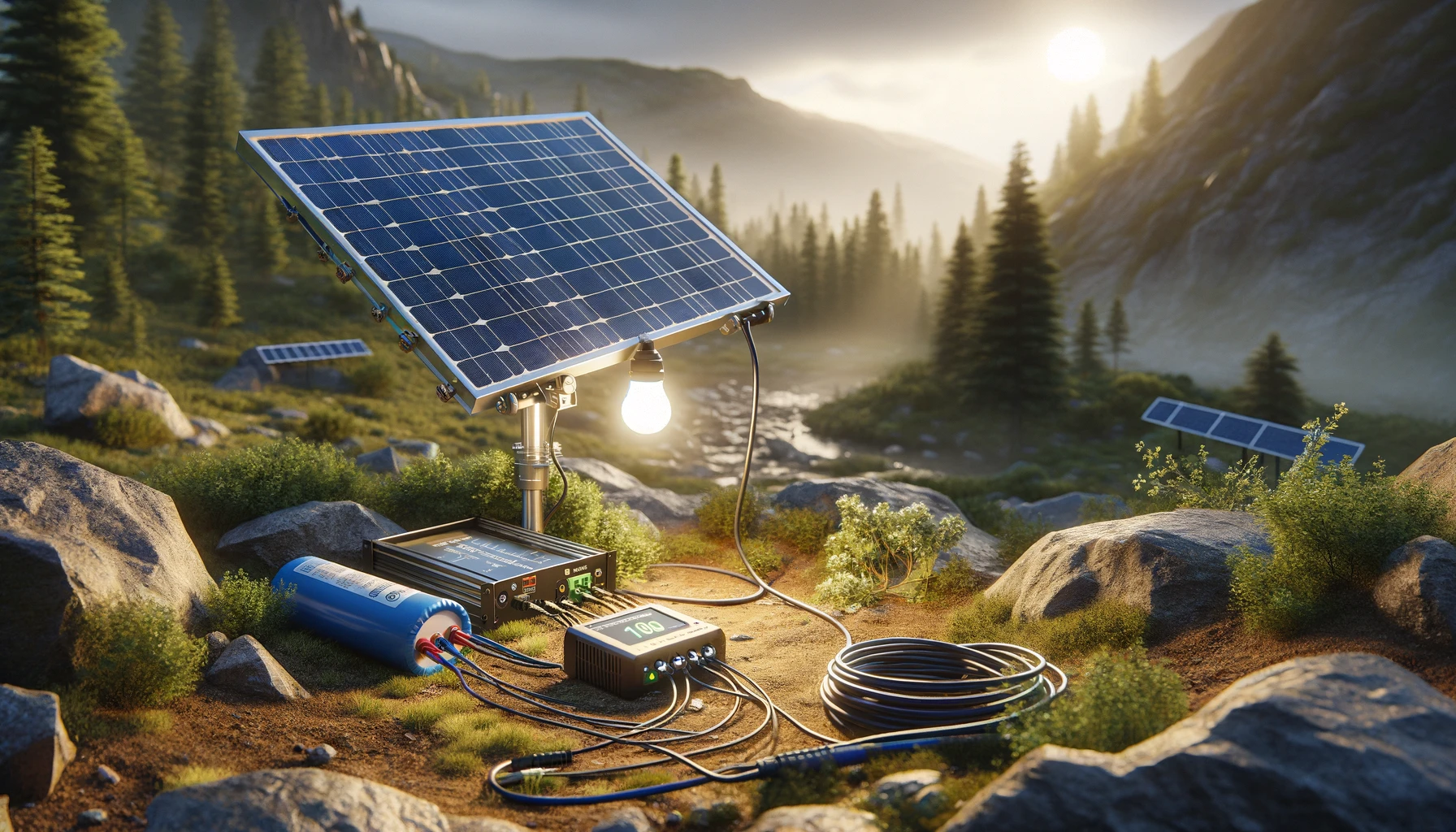
If you live in a remote or hilly area without access to electricity, using solar power to run a 10-watt DC light for 12 hours at night is a practical and eco-friendly solution. Here’s a simple guide on how to set it up.
1. Calculate Energy Needs
- 1. Calculate Energy Needs
- A 10-watt light uses 10 watts per hour. To keep it running for 12 hours (from 6 PM to 6 AM), you will need: 10 watts×12 hours=120 watt-hours (Wh)
- This means your solar setup should generate and store at least 120 watt-hours of energy.
2. Choose the Right Solar Panel
- A 50W solar panel should be enough to generate the required power. On a sunny day, this panel can produce about 200-300 Wh of energy, depending on the location and weather.
- If you are in an area with fewer sunlight hours, a 100W panel would be better, as it can produce 400-500 Wh per day.
3. Select a Battery
- To store the solar energy, you’ll need a 12V battery. For this setup, a 12V, 10Ah (Amp-hour) battery works well because it stores: 12 volts×10 Ah=120 Wh
- This amount is exactly what’s needed to run the light for 12 hours.
- Lithium Iron Phosphate (LiFePO4) batteries are a great option because they last longer and are more efficient than traditional lead-acid batteries.
4. Install a Charge Controller
- A charge controller manages the flow of electricity between the solar panel and the battery. It ensures the battery charges efficiently and prevents overcharging or damage.
- For a small setup like this, a PWM (Pulse Width Modulation) controller is sufficient. However, an MPPT (Maximum Power Point Tracking) controller is more efficient, especially if sunlight varies throughout the day.
5. Wiring and Setup
- Connect the solar panel to the charge controller: The panel collects sunlight during the day and charges the battery through the controller.
- Connect the battery to the charge controller: The controller stores the energy in the battery.
- Connect the 10W DC light to the battery: Once the battery is charged, it will power the light for 12 hours at night.
6. Consider Backup Power
- In case of cloudy days, you might want a larger battery, such as a 12V, 20Ah battery, to store extra power. This will ensure you have enough energy for multiple nights without sunlight.
Conclusion
To power your 10-watt DC light for 12 hours at night in remote or hilly areas, you need a 50W solar panel, a 12V, 10Ah battery, and a charge controller. This simple setup ensures reliable, eco-friendly lighting without the need for electricity. Solar energy provides a sustainable solution to keep your lights on, even in the most remote locations.
